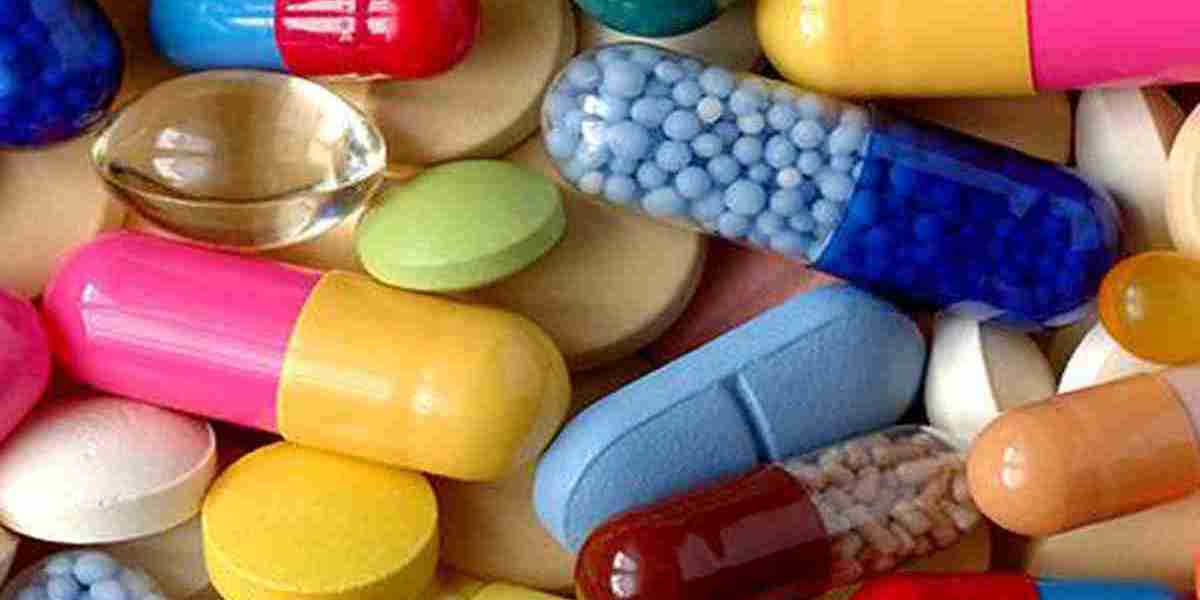The antibacterial drugs market is experiencing significant growth, driven by a variety of factors, one of the most critical being the rise in hospital-acquired infections (HAIs). These infections, which are contracted by patients during their stay in healthcare settings, represent a major challenge for both patients and healthcare providers. As the incidence of HAIs continues to surge globally, the demand for potent antibiotic therapies is becoming more pressing. This article explores how the increasing rate of hospital-acquired infections is shaping the antibacterial drugs market, the risks associated with these infections, and the growing need for effective and targeted antibiotic treatments.
The Growing Threat of Hospital-Acquired Infections
Hospital-acquired infections, also known as nosocomial infections, are infections that occur in patients during or after their stay in a hospital or healthcare facility. These infections are typically caused by bacteria, viruses, or fungi, with bacteria being the leading cause. Common types of hospital-acquired infections include pneumonia, urinary tract infections (UTIs), bloodstream infections (BSIs), surgical site infections (SSIs), and gastrointestinal infections.
HAIs are a significant global health concern. According to the World Health Organization (WHO), tens of millions of patients suffer from healthcare-associated infections every year, resulting in increased morbidity, mortality, and healthcare costs. In addition to the immediate risks posed to patients, HAIs also contribute to longer hospital stays and the development of antimicrobial resistance (AMR), which further complicates treatment options.
Factors Driving the Surge in Hospital-Acquired Infections
Several factors contribute to the rising incidence of hospital-acquired infections:
Increased Patient Vulnerability: Patients in hospitals are often more vulnerable to infections due to weakened immune systems, chronic health conditions, invasive procedures, surgeries, and prolonged antibiotic use. The use of catheters, ventilators, and surgical instruments can create pathways for bacteria to enter the body, leading to infections.
Antimicrobial Resistance (AMR): The growing prevalence of antimicrobial-resistant bacteria is exacerbating the problem of HAIs. Resistant pathogens, such as Methicillin-resistant Staphylococcus aureus (MRSA), Vancomycin-resistant Enterococci (VRE), and Carbapenem-resistant Enterobacteriaceae (CRE), are increasingly difficult to treat with existing antibiotics, making hospital-acquired infections more challenging to manage.
Overcrowded Healthcare Facilities: Overcrowding in hospitals, particularly in low- and middle-income countries, increases the risk of cross-contamination and the spread of infections. Limited resources and inadequate sanitation measures in some healthcare settings further contribute to the transmission of pathogens.
Longer Hospital Stays: Prolonged stays in healthcare facilities increase the chances of patients acquiring infections during their treatment. This is especially true for patients undergoing intensive care or surgery, where the risk of HAIs is higher due to exposure to invasive medical devices and compromised immune function.
Improper Use of Antibiotics: The overuse and misuse of antibiotics in hospitals have led to the development of resistant strains of bacteria, which are difficult to treat with standard antibiotics. Inappropriate antibiotic prescribing and incomplete courses of treatment contribute to the development of antimicrobial resistance, making HAIs more difficult to control.
The Need for Potent Antibiotic Therapies
As the incidence of hospital-acquired infections rises, so too does the need for potent antibiotic therapies that can effectively treat resistant bacteria. The growing threat of multi-drug resistant (MDR) organisms means that healthcare providers require access to newer, more powerful antibiotics that can target these resistant pathogens.
Pharmaceutical companies are increasingly focusing on developing novel antibiotics that can combat resistant infections. These include antibiotics with unique mechanisms of action that are less likely to encourage the development of resistance. In addition, the need for broad-spectrum antibiotics that can treat a wide range of infections is essential in hospital settings, where infections can be caused by a variety of pathogens.
The rise in hospital-acquired infections is also driving interest in combination therapies, where multiple antibiotics are used together to improve efficacy and reduce the likelihood of resistance. Combination therapies are particularly valuable in treating infections caused by polymicrobial infections or resistant bacteria, as they offer a more comprehensive approach to infection management.
Hospital-Acquired Infections and the Antibacterial Drugs Market
The increase in hospital-acquired infections is having a direct impact on the antibacterial drugs market. As more healthcare facilities report rising rates of HAIs, there is an increasing demand for antibiotics that can effectively treat these infections. This has led to heightened investments in the research and development of new antibacterial treatments, as well as the adoption of antibiotic stewardship programs that aim to optimize the use of existing antibiotics and reduce the development of resistance.
In particular, the market for antibiotics targeting Gram-negative bacteria, which are often responsible for hospital-acquired infections, is expanding. These bacteria are notoriously difficult to treat, and their resistance to commonly used antibiotics has prompted the need for new classes of antibiotics that can address these challenging pathogens.
The rise of rapid diagnostic tools is also playing a significant role in addressing hospital-acquired infections. These tools help healthcare providers identify the causative pathogens more quickly, allowing for more accurate and targeted treatment. Faster diagnosis means that patients can receive the right antibiotic therapy sooner, which can reduce the spread of infections within healthcare settings and improve patient outcomes.
Opportunities in the Antibacterial Drugs Market
The surge in hospital-acquired infections presents several growth opportunities in the antibacterial drugs market:
Development of New Antibiotics: The development of next-generation antibiotics is essential to address the growing threat of multi-drug resistant (MDR) infections in hospital settings. Pharmaceutical companies are investing heavily in the research and development of novel antibiotics that can effectively treat resistant pathogens, including superbugs that are resistant to most available treatments.
Combination Therapy and Targeted Treatments: There is a growing interest in developing combination antibiotic therapies that can treat infections caused by resistant bacteria. These therapies are likely to become a significant market segment, particularly in hospitals where multi-drug resistant infections are prevalent.
Adoption of Rapid Diagnostic Technologies: The growing need for quicker identification of bacterial infections in hospitals is creating opportunities for the development and adoption of point-of-care diagnostic tests. These tools will help clinicians quickly determine the right course of treatment, which is especially important in the context of hospital-acquired infections.
Infection Control and Prevention Solutions: In addition to drug development, there is also a significant market for infection prevention and control solutions in healthcare settings. Sterilization technologies, disinfection products, and infection control protocols are critical in reducing the risk of hospital-acquired infections and improving patient outcomes.
Conclusion
The increasing incidence of hospital-acquired infections is one of the primary drivers of growth in the antibacterial drugs market. As the global healthcare industry faces the challenge of combating resistant bacterial infections, there is a clear need for potent antibiotic therapies and innovative treatments. Pharmaceutical companies that focus on developing new antibiotics, combination therapies, and diagnostic tools will play a key role in addressing the growing threat of HAIs. As the healthcare sector continues to prioritize infection control and antimicrobial stewardship, the demand for effective antibacterial drugs will continue to rise, presenting significant opportunities for market expansion and innovation.



